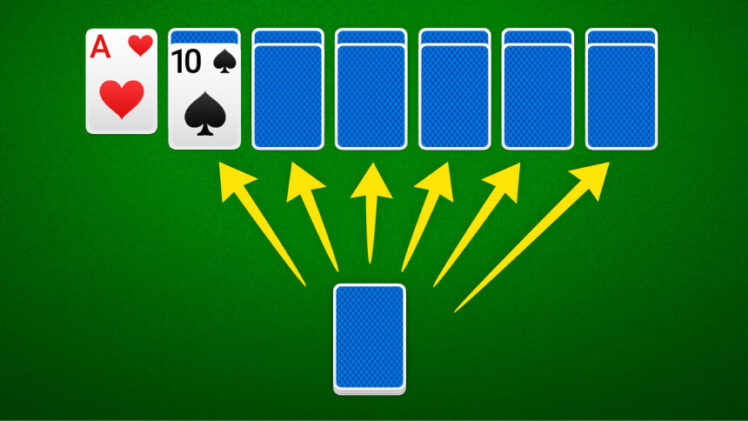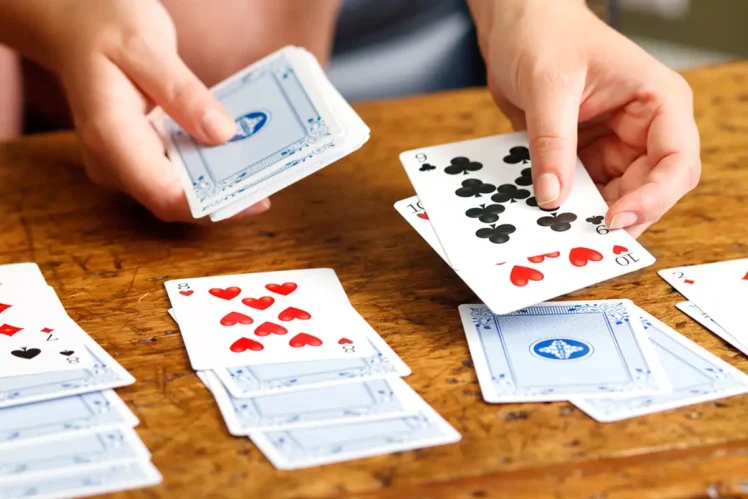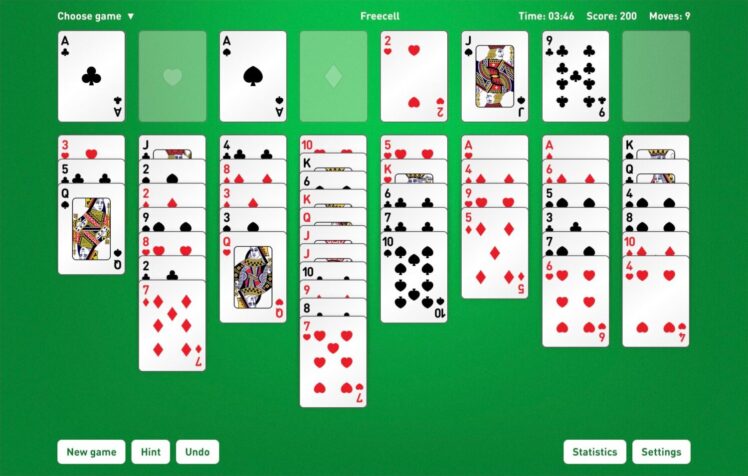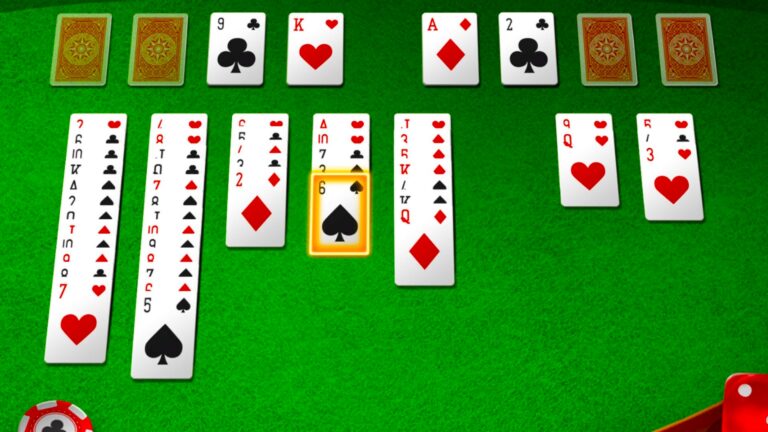Table of Contents
Solitaire, also known as Patience or Card Solitaire, is a captivating game played by a single person. Its origin remains a mystery, but it gained popularity in 19th-century France and was mentioned in a German game anthology in 1788.
To play Solitaire, gather a standard deck of 52 cards. The game’s duration depends on the player’s pace, typically lasting 5-15 minutes. The tactile experience of physically moving and flipping the cards sets it apart from online Solitaire, making it both engaging and enjoyable.
The objective of Solitaire is to organize the cards in ascending order as per their suits (diamonds, clubs, hearts, and spades). Remember, aces are considered low in this game. Victory is achieved by building four foundation stacks, one for each suit, from bottom to top: Ace-2-3-4-5-6-7-8-9-10-Jack-Queen-King.
Luck plays a significant role in Solitaire as the order in which cards are drawn impacts the gameplay. Consequently, winning every game is not guaranteed. At times, players may be unable to make a move and forced to forfeit or reshuffle. Notably, winning Solitaire with a randomly sorted deck of cards has an approximate probability of 1 in 30. Immerse yourself in Solitaire’s challenge and enjoyment, embracing the authentic experience of playing with physical cards.
Below are steps for Solitaire set up;
Step 1: Setup the Game Area

To begin with, you need a standard deck of 52 cards to play Solitaire. Spread out the deck of cards, face down, and shuffle the cards thoroughly. Ensure you have enough space to spread out the cards; they should face you on the tabletop.
Step 2: Dealing Out the Cards
Now, it’s time to begin the game. Start by dealing seven cards in a row, starting from the left-hand side. Move to the right row and continue by dealing six cards, then five, four, three, two, and one card, respectively, to form a tableau layout. Ensure the cards’ orientation is facing downwards, except for the final tableau card, which should face upwards.
Step 3: Deal the Remaining Cards

After creating the tableau layout, you should deal with the remaining cards, which will make up the stockpile deck at the top left-hand corner of the game layout. Ensure that the cards are face downwards, except for the top card, which should face upwards.
Step 4: Incorporate visuals and colors
Solitaire is a visual game, and incorporating images, colors, and other graphics can enhance your brand’s solitaire content. Consider using images of cards and a range of colors to bring your solitaire content to life. Also, consider using motion graphics and animations to add a sense of movement and excitement to your solitaire content.
Step 5: Familiarize Yourself with the Rules and Layout

Before you start playing any game, reading and understanding the rules is important. With Solitaire, each variation may have slightly different rules, so make sure you’re familiar with the version you’re playing. Also, take some time to study the layout and understand where the cards are placed and how they’re retrieved.
Conclusion
With its timeless appeal and simple gameplay, Solitaire is a game that can capture and delight audiences of all ages. But why stop there when you can also incorporate the magnetic charm of board games into your Solitaire experience? By using an authentic, bold, and creative tone of voice in your solitaire content, you can up the game’s appeal and make it a must-play card game in your audience’s lives. From sharing interesting facts and history to keeping the tone playful and personable, these tips can help you craft an engaging solitaire experience that your audience will love. So go ahead – shuffle up the cards, deal out a game, and get ready to up your solitaire tone of voice with the added attraction of magnet board games!

